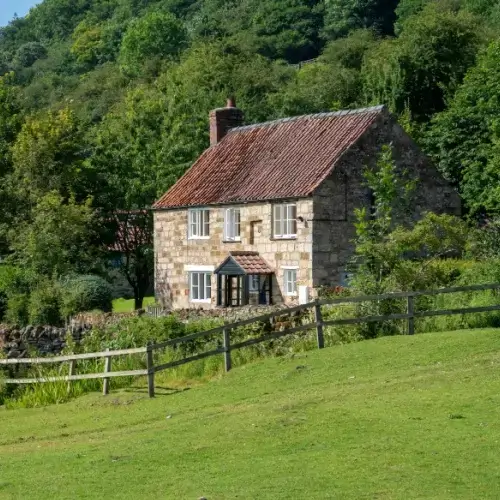Home / Home Loans / Regional First Home Buye…

Key takeaways
- The Regional First Home Buyer Guarantee (RFHBG) is designed to assist eligible first home buyers in buying residential homes in regional areas.
- RFHBG recipients can be approved for a home loan with a deposit as small as 5% and won’t need to pay lenders’ mortgage insurance (LMI).
- You’ll need to comply with the relevant eligibility requirements and property price thresholds, so be sure to give those a look before making any moves.
Expert tips for making use of the Regional First Home Buyer Guarantee
Our General Manager of Money, Stephen Zeller, has some tips for prospective first homebuyers looking to access the Regional First Home Buyer Guarantee to buy their first home in a regional area.

Check the eligibility criteria
The Regional First Home Buyer Guarantee, like other initiatives under the Home Guarantee Scheme, has eligibility requirements you’ll need to meet in order to apply. You’ll also need to make sure the property you’re wanting to buy is eligible for the RFHBG before you contact a lender or mortgage broker.
The RFHBG could be combined with other initiatives
If you’re eligible for the RFHBG, you could also be eligible for other government benefits designed to make life easier for first home buyers in Australia. For example, you may want to look into the First Home Owner Grant (FHOG) which, depending on the state or territory you live in, could contribute as much as $30,000 towards your home loan.
Don’t settle for an average home loan!
Not having to pay LMI will certainly make your home loan repayments smaller than they would’ve been otherwise, but why stop there? Our online home loan comparison service can help you do a comparison of your options and potentially find a home loan that’s suitable for you; note that only lenders who have been authorised by Housing Australia can offer the Home Guarantee Scheme to borrowers.
The Regional First Home Buyer Guarantee explained
What is the Regional First Home Buyer Guarantee?

The Regional First Home Buyer Guarantee is an Australian Government initiative run by Housing Australia. It’s one third of the overall Home Guarantee Scheme (HGS), along with the First Home Guarantee (FHBG) and the Family Home Guarantee (FHG).
The RFHBG is specifically aimed at making it easier for eligible first home buyers to buy a property in regional areas, by securing enough of their home loan to ensure they don’t have to pay lenders mortgage insurance (LMI).
How does the Regional First Home Buyer Guarantee work?
Successful RFHBG applicants will have up to 15% of their home loan guaranteed by the Federal Government. As applicants are required to have at least a 5% deposit saved, the RFHBG ensures that any and all recipients will have 20% of their home loan guaranteed.
This in turn means that successful applicants will avoid having to pay LMI, reducing the cost of their home loan repayments and their long-term home loan costs.
Eligible regional home buyers can utilise the RFHBG to assist in the purchase of a range of different property types, including:
- An existing home, townhouse or apartment
- A house and land package
- Land and a separate contract to build a new home
- An off-the-plan apartment or townhouse.
However, the RFHBG is for owner-occupied residential properties only – investment properties are not eligible for purchase via the RFHBG.
What are the property price caps for the Regional First Home Buyer Guarantee?
There are stipulated maximum purchase prices for properties bought via the RFHBG, which vary by state and territory. For first home buyers living in a state and not a territory, there will a different set of price caps for buying in a capital city or regional centre versus buying elsewhere in the state.
The property price caps for the RFHBG are as follows:
| State | Capital City and Regional Centre* | Rest of State | |
|---|---|---|---|
| NSW | $900,000 | $750,000 | |
| VIC | $800,000 | $650,000 | |
| QLD | $700,000 | $550,000 | |
| WA | $450,000 | ||
| SA | $450,000 | ||
| TAS | $450,000 | ||
| Territory | All areas | ||
| ACT | Not applicable | ||
| NT | $600,000 | ||
| Jervis Bay Territory & Norfolk Island | $550,000 | ||
| Christmas Island and Cocos (Keeling) Islands | $400,000 | ||
*The regional centres in question are Newcastle and Lake Macquarie, Illawarra, Geelong, Gold Coast and Sunshine Coast.
Applying for the Regional First Home Buyer Guarantee
Regional First Home Buyer Guarantee eligibility criteria
Whether single or joint applicants, borrowers must be:
- Australian citizens or Australian permanent residents
- 18 years of age or older
- Looking to purchase a home with a value under the relevant property price caps for their state and area
- Earning up to $125,000 as an individual or a combined $200,000 as joint applicants
- Applying through an authorised lender or a mortgage broker working as a representative of an authorised lender
- First home buyers, or previous house owners who haven’t owned or had an interest in property or vacant land in Australia in the last 10 years.
Additionally, for the purposes of the RFHBG, a regional area is defined by Housing Australia as1:
- The Statistical Area Level 4 (ASGS SA4 2016) areas in a state or the Northern Territory that are not a capital city of that state or territory
- Norfolk Island or the Territories of Jervis Bay, Christmas Island or Cocos (Keeling) Islands, as defined in the version published by the Australian Bureau of Statistics (ABS) in July 2016.
- The greater capital city areas of each state and the Northern Territory.
The entire ACT is excluded from the RFHBG. Home buyers in these areas may be eligible for the First Home Guarantee or Family Home Guarantee.
Eligible single parents or legal guardians with dependent children may want to apply for the Family Home Guarantee (FHG) instead if they’ve owned property in Australia in the last 10 years.
When assessing your sole or joint income, the lender will look at your most recent Notice of Assessment (NOA) from the Australian Taxation Office (ATO), showing your taxable income for the relevant financial year.
How to apply for the Regional First Home Buyer Guarantee
To apply for the Regional First Home Buyer Guarantee, you’ll need to apply for a home loan with one of the federal government’s nominated participating lenders. The chosen lenders are:
- Australian Military Bank
- Australian Mutual Bank
- Auswide Bank
- Bank Australia
- Bankfirst
- bankSA
- BankWAW
- Bank of Heritage Isle
- Bank of Melbourne
- Bank of us
- Bendigo Bank
- Beyond Bank
- Border Bank
- Commonwealth Bank
- Community First Bank
- Credit Union SA
- Defence Bank
- Firefighters Mutual Bank
- G&C Mutual Bank
- Gateway Bank
- Great Southern Bank
- Health Professionals Bank
- Indigenous Business Australia
- Illawarra Credit Union
- IMB Bank
- MyState Bank
- NAB
- Newcastle Permanent
- People’s Choice
- Police Bank
- QBANK
- Queensland Country Bank
- Regional Australia Bank
- St.George
- Teachers Mutual Bank
- The Mutual Bank
- UniBank
- Unity Bank
- Westpac.
You also have the option of applying through a mortgage broker acting as a representative of one of the approved lenders listed above.
The lender will largely handle the RFHBG application for you as part of your regular application – you’ll just need to let them know up front that you’re wanting to apply. Whether you’re applying for the RFHBG or not, keep in mind that you’ll still need to meet the regular lending criteria of whichever lender you’re applying with. The lender will conduct the same assessment of your finances either way (the only difference being the portion of your home loan that’s guaranteed).
RFHBG alternatives for first home buyers
If you’re ineligible for the RFHBG or not currently in a position to apply for it, there are other ways to potentially help yourself secure home ownership.
Find a guarantor
A guarantor could help you avoid paying LMI in a way similar to the RFHBG. A guarantor is an individual, usually a spouse or close family member, who already owns and has equity in a property, and offers up a portion of that equity to help secure your home loan.
That additional guarantee could help push you to that important 20% deposit mark, meaning you typically won’t need to pay LMI – just like if you’d been approved for the RFHBG!
However, if you can’t meet your home loan repayments, your guarantor will assume responsibility for making them, along with their own existing home loan repayments. This could put them into a tricky spot financially and could even result in mortgage stress – so you and your potential guarantor will generally want to discuss the idea thoroughly to make sure you both understand the risks involved.
Change your property search parameters
If the property types and postcodes you’re currently looking at are a bit out of your price range, there’s nothing wrong with modifying your expectations slightly. Looking at smaller properties in the same area, or similar properties in a cheaper area could help you find a property that better suits your budget. And the smaller the home loan you need, the larger your deposit will be – relatively speaking.
Save up for longer
At the end of the day, if you don’t have a guarantor and even the less ideal properties around are still beyond your means, you may decide simply to ‘knuckle down’ and save up a larger home loan deposit. This may take longer and could require some prolonged lifestyle changes on your part, but it could be your most reliable bet.
Meet our home loans expert, Stephen Zeller
Stephen has more than 30 years of experience in the financial services industry and holds a Certificate IV in Finance and Mortgage Broking. He’s also a member of both the Australian and New Zealand Institute of Insurance and Finance (ANZIIF) and the Mortgage and Finance Association of Australia (MFAA).
Stephen leads our team of Mortgage Brokers, and reviews and contributes to Compare the Market’s banking-related content to ensure it’s as helpful and empowering as possible for our readers.
1 Housing Australia. Regional First Home Buyer Guarantee. Accessed November 2024.


